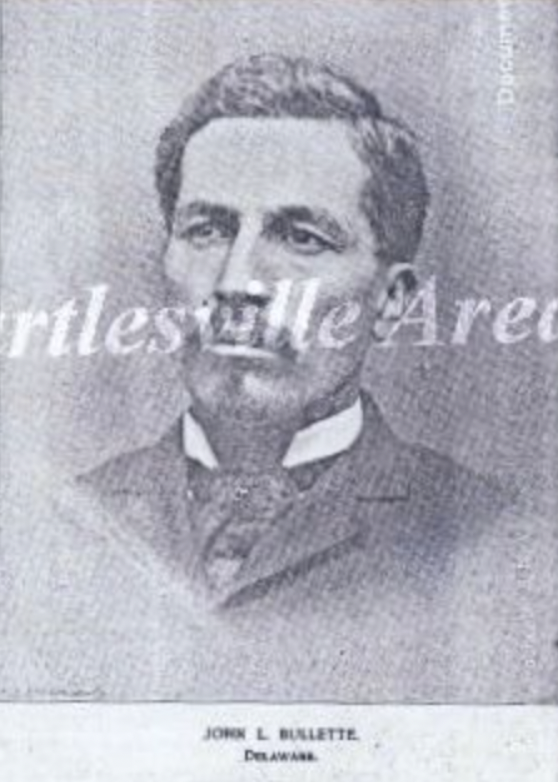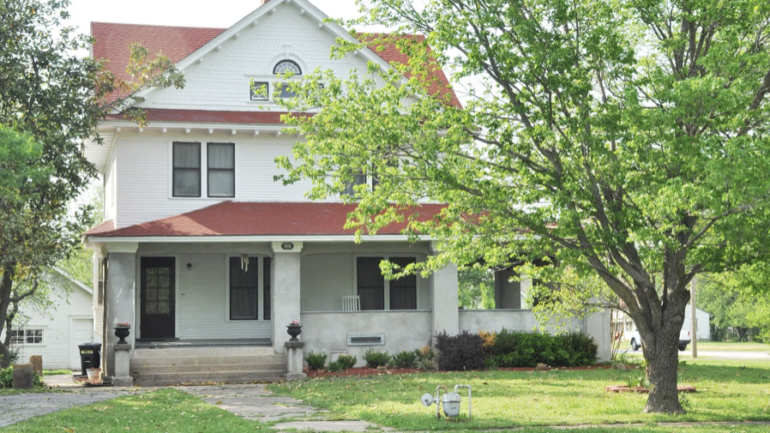Telling Claremore’s History…one day at a time
Written by Christa Rice in Explore Claremore’s History.
Everyone loves a well-written murder mystery until the murder happens in one’s own home town. The unsolved mystery of the murder of John Bullette was a grievous injustice in early Claremore history. Bullette hailed from a prominent pioneer, Delaware family. His father, George Bullette, led a band of Delaware, allies of the Cherokees, in the Cherokee/Osage Battle of Claremore Mound (June 1818) (State Herald, 2-15-1905).
As a young man, Bullette invested his energies in cattle ranching, commerce, and the mercantile business. He was employed by Jake Bartles of Dewey and Bartlesville, Indian Territory, fame, where Bartles’s mentoring prepared Bullette for future prosperous business ventures, first near Claremore Mound and then, after the railroad’s arrival, at the present-day Claremore site. Once established in business, in 1880, Bullette married his Cherokee wife “Nellie” Conkle. (Will Rogers Country, Noel Kaho, p.33). To them were born Mable Zoe, Mary, George, and Floyd (Claremore Progress, 9-24-1909); their names are all listed on the Dawes Rolls.
While driving a well on Bullette’s property in 1894, the Childers Bros. struck a thick vein of coal eighty-two feet down. This discovery put an unlimited supply of fuel right at Claremore’s doorsteps and made Bullette a wealthy coal capitalist, placing him “in possession of one of the finest veins in the Territory” (CP,9-15-1894). Bullette also became integrally involved in Cherokee Nation politics eventually winning the elected position as solicitor (CP,8-10-1894).
In the spring of 1896, Bullette put the finishing touches on the family’s two-story, two-winged Queen Anne styled residence, on Cherokee Avenue just off Will Rogers Boulevard, Claremore. A testimony to Bullette’s financial success the home was the finest residence in Claremore with its central round turret, stained glass windows, and decoratively carved gingerbread trim (CP,6-20-1896). Here the Bullettes entertained family and guests with dancing parties, moonlight summer picnics, and musical soirees.
Sadly, May 29, 1906, after 25 years of marriage, John Bullette’s beloved wife Nellie died (CP,6-16-1906). His daughters married and Bullette and the children scattered from the family home which was eventually leased out as a rooming house.
It was on the evening of April 16, 1909, that the final Bullette family tragedy struck. John Bullette fell victim to an assassin’s bullet, the crime sending a shock of outrage through the Claremore community.
About 11 o’clock pm, using a thirty-eight-caliber revolver, an assassin stood stealthily on the roof of the one-story building next door to the two-story National Bank building (then located on the northeast corner of Lynn Riggs and Will Rogers Boulevards) where Mr. Bullette had taken up residence in a second floor apartment. Four shots were fired through the window. The first bullet hit Bullette’s neck. The third bullet pierced his heart. He died before help could arrive. Though a diligent search by law enforcement ensued, the guilty slayer escaped (CM,4-23-1909).
Well educated and highly successful, midway through the 50th decade of his life, John Bullette left behind considerable propertyand many bereaved friends and family members to mourn his passing (CM,4-16-1909). During the murder investigation, it was revealed to the general public that Widower Bullette had made plans to marry Miss Pearl Eddleman, of Muskogee, that June (CP,4-17-1909).
Another supposedly jilted woman, Helen Yarbrough, became a primary suspect in the murder case; a friend of Yarborough’s was thought to have pulled the actual trigger (Guthrie Daily Leader, 5-3-1909). In the end, Yarbrough committed suicide, eating strychnine after she was arrested (Weekly Chieftain, 5-7-1909), taking her dastardly secrets with her to the grave (CP,5-8-1909).
Who killed John Bullette? The answer to this question remains a mystery, the criminal investigation forever unsolved.



